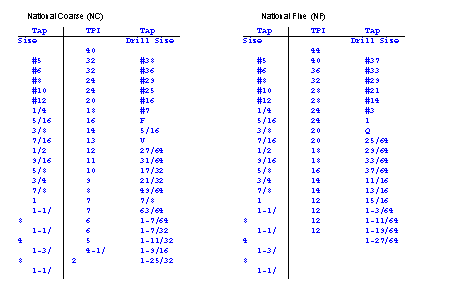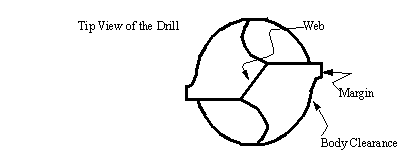
• The twist drill does most of the cutting with the tip of the bit.
• There are flutes to carry the chips up from the cutting edges to the top of the hole where they are cast off.
• Some of the parts of a drill bit are diagramed below as viewed from the cutting tip of the drill,

• Some other features of the drill bit are shown below for a side view of the drill bit,
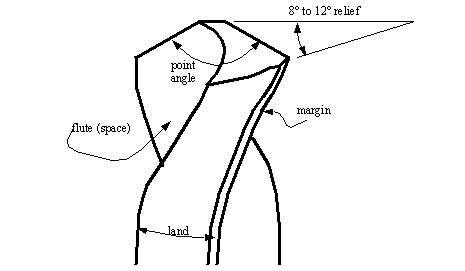
• Typical parameters for drill bits are,
- Material is High Speed Steel
- Standard Point Angle is 118°
• Harder materials have higher point angles, soft materials have lower point angles.
• The helix results in a positive cutting rake.
• Drill bits are typically ground (by hand) until they are the desired shape. When done grinding, the lips should be the same length and at the same angle, otherwise and oversized hole may be produced.
• Drill sizes are typically measured across the drill points with a micrometer
- FRACTIONAL - 1/64” to 3 1/4” dia. in 1/64” steps
- NUMBER - #1 = 0.228” dia. to #80 = 0.0135” dia.
- LETTER - A = 0.234” dia. to Z = 0.413” dia.
- METRIC - 0.4mm dia. to 50mm dia.
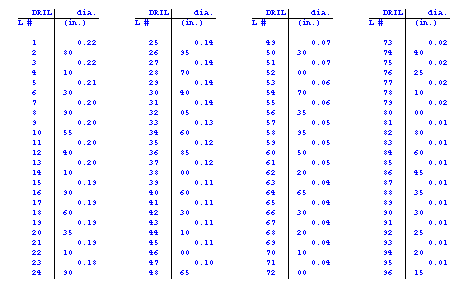
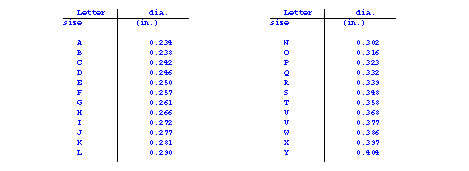
• Some standard drill types are,
- Straight Shank - this type is held in a chuck
- Taper shank - this type is held in a sleeve, and a machine spindle. A drift may also be used.
• Some other types of drills used are,
- Core drills - a drill with a small helix, and 3 or 4 flutes. This is used for light drilling, such as opening holes in castings.
- High helix - When drilling a deep hole in a soft material these drills are used to help remove chips
- Straight fluted - Used to drill soft metals and plastics. The straight flutes prevent the bit from digging in.
- Centre drills - A drill with a small entry tip, and a widening profile. The result is a hole that has a conical shape on the outside, that may be used to mount the part between centres, or to act as a guide for a larger drill.
• Typically an allowance of a third of the drill bit diameter is given for the tip of the drill.

• Reamers are a special class of drill. They are used after a hole has been drilled near to final size. The reamers is then used to remove a small quantity of material, and finish the hole with a good surface texture, roundness, and alignment.

• These are often used to provide holes for bearings, parallel and taper dowels, and various fits with a shaft.
• These are typically made of High Speed Steel, or with carbide tips.
• The main body contains many straight and helical flutes. The tip does not contain any cutting edges.
- Parallel Reamer - Straight fluted reamer held in a drill press spindle with a tapered shank.
- Parallel Hand - Straight flutes, but held in a hand tap wrench.
- Taper Reamers - has a taper from one end to the other. These can be used in a spindle (tapered shank), or by hand (for a taper wrench).
- Adjustable Reamer - This uses inserted blades.
• Recommended allowances and speeds for reaming [Krar],
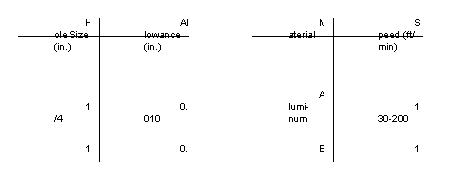
• Boring is used for high quality finished.
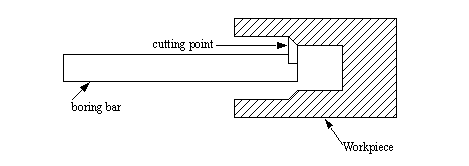
• In boring the tool can be rotated, or the work can be rotated.
• Taps can use for both internal and external threads.
• A typical set of hand taps consists of
• There are flutes in the taps to help remove chips, to provide cutting edges, and channels for lubrication.
• There are a number of sets of threads available,
- UNC (Unified National Course)
• To create one of these holes, we must first drill a hole that is slightly smaller. For example,
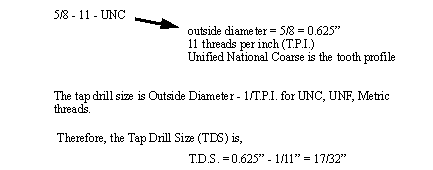
• Some setups associated with taps are,
- alignment of the tap in a drill press
• NF/NC Thread Tap Drill Sizes [Krar],
